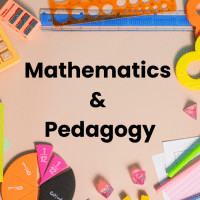CTET & State TET Exam > CTET & State TET Questions > Assertion(A): Teacher and their students visi...
Start Learning for Free
Assertion(A): Teacher and their students visits a zoological park and students can learn about animals more effectively by directly seeing them.
Reason(R): Children can learn more effectively by observational and direct interactional based learning.
Reason(R): Children can learn more effectively by observational and direct interactional based learning.
- a)(A) and (R) both are true, and (R) is the correct explanation of (A).
- b)(A) and (R) both are true, but (R) is not a correct explanation of (A).
- c)(A) is true but (R) is false
- d)Both (A) and (R) are false.
Correct answer is option 'A'. Can you explain this answer?
| FREE This question is part of | Download PDF Attempt this Test |
Most Upvoted Answer
Assertion(A): Teacher and their students visits a zoological park and ...
Psychologist Albert Bandura is the researcher most often associated with learning through observation. He and others have demonstrated that we are naturally inclined to engage in observational learning.
Attention CTET & State TET Students!
To make sure you are not studying endlessly, EduRev has designed CTET & State TET study material, with Structured Courses, Videos, & Test Series. Plus get personalized analysis, doubt solving and improvement plans to achieve a great score in CTET & State TET.

|
Explore Courses for CTET & State TET exam
|

|
Assertion(A): Teacher and their students visits a zoological park and students can learn about animals more effectively by directly seeing them.Reason(R): Children can learn more effectively by observational and direct interactional based learning.a)(A) and (R) both are true, and (R) is the correct explanation of (A).b)(A) and (R) both are true, but (R) is not a correct explanation of (A).c)(A) is true but (R) is falsed)Both (A) and (R) are false.Correct answer is option 'A'. Can you explain this answer?
Question Description
Assertion(A): Teacher and their students visits a zoological park and students can learn about animals more effectively by directly seeing them.Reason(R): Children can learn more effectively by observational and direct interactional based learning.a)(A) and (R) both are true, and (R) is the correct explanation of (A).b)(A) and (R) both are true, but (R) is not a correct explanation of (A).c)(A) is true but (R) is falsed)Both (A) and (R) are false.Correct answer is option 'A'. Can you explain this answer? for CTET & State TET 2024 is part of CTET & State TET preparation. The Question and answers have been prepared according to the CTET & State TET exam syllabus. Information about Assertion(A): Teacher and their students visits a zoological park and students can learn about animals more effectively by directly seeing them.Reason(R): Children can learn more effectively by observational and direct interactional based learning.a)(A) and (R) both are true, and (R) is the correct explanation of (A).b)(A) and (R) both are true, but (R) is not a correct explanation of (A).c)(A) is true but (R) is falsed)Both (A) and (R) are false.Correct answer is option 'A'. Can you explain this answer? covers all topics & solutions for CTET & State TET 2024 Exam. Find important definitions, questions, meanings, examples, exercises and tests below for Assertion(A): Teacher and their students visits a zoological park and students can learn about animals more effectively by directly seeing them.Reason(R): Children can learn more effectively by observational and direct interactional based learning.a)(A) and (R) both are true, and (R) is the correct explanation of (A).b)(A) and (R) both are true, but (R) is not a correct explanation of (A).c)(A) is true but (R) is falsed)Both (A) and (R) are false.Correct answer is option 'A'. Can you explain this answer?.
Assertion(A): Teacher and their students visits a zoological park and students can learn about animals more effectively by directly seeing them.Reason(R): Children can learn more effectively by observational and direct interactional based learning.a)(A) and (R) both are true, and (R) is the correct explanation of (A).b)(A) and (R) both are true, but (R) is not a correct explanation of (A).c)(A) is true but (R) is falsed)Both (A) and (R) are false.Correct answer is option 'A'. Can you explain this answer? for CTET & State TET 2024 is part of CTET & State TET preparation. The Question and answers have been prepared according to the CTET & State TET exam syllabus. Information about Assertion(A): Teacher and their students visits a zoological park and students can learn about animals more effectively by directly seeing them.Reason(R): Children can learn more effectively by observational and direct interactional based learning.a)(A) and (R) both are true, and (R) is the correct explanation of (A).b)(A) and (R) both are true, but (R) is not a correct explanation of (A).c)(A) is true but (R) is falsed)Both (A) and (R) are false.Correct answer is option 'A'. Can you explain this answer? covers all topics & solutions for CTET & State TET 2024 Exam. Find important definitions, questions, meanings, examples, exercises and tests below for Assertion(A): Teacher and their students visits a zoological park and students can learn about animals more effectively by directly seeing them.Reason(R): Children can learn more effectively by observational and direct interactional based learning.a)(A) and (R) both are true, and (R) is the correct explanation of (A).b)(A) and (R) both are true, but (R) is not a correct explanation of (A).c)(A) is true but (R) is falsed)Both (A) and (R) are false.Correct answer is option 'A'. Can you explain this answer?.
Solutions for Assertion(A): Teacher and their students visits a zoological park and students can learn about animals more effectively by directly seeing them.Reason(R): Children can learn more effectively by observational and direct interactional based learning.a)(A) and (R) both are true, and (R) is the correct explanation of (A).b)(A) and (R) both are true, but (R) is not a correct explanation of (A).c)(A) is true but (R) is falsed)Both (A) and (R) are false.Correct answer is option 'A'. Can you explain this answer? in English & in Hindi are available as part of our courses for CTET & State TET.
Download more important topics, notes, lectures and mock test series for CTET & State TET Exam by signing up for free.
Here you can find the meaning of Assertion(A): Teacher and their students visits a zoological park and students can learn about animals more effectively by directly seeing them.Reason(R): Children can learn more effectively by observational and direct interactional based learning.a)(A) and (R) both are true, and (R) is the correct explanation of (A).b)(A) and (R) both are true, but (R) is not a correct explanation of (A).c)(A) is true but (R) is falsed)Both (A) and (R) are false.Correct answer is option 'A'. Can you explain this answer? defined & explained in the simplest way possible. Besides giving the explanation of
Assertion(A): Teacher and their students visits a zoological park and students can learn about animals more effectively by directly seeing them.Reason(R): Children can learn more effectively by observational and direct interactional based learning.a)(A) and (R) both are true, and (R) is the correct explanation of (A).b)(A) and (R) both are true, but (R) is not a correct explanation of (A).c)(A) is true but (R) is falsed)Both (A) and (R) are false.Correct answer is option 'A'. Can you explain this answer?, a detailed solution for Assertion(A): Teacher and their students visits a zoological park and students can learn about animals more effectively by directly seeing them.Reason(R): Children can learn more effectively by observational and direct interactional based learning.a)(A) and (R) both are true, and (R) is the correct explanation of (A).b)(A) and (R) both are true, but (R) is not a correct explanation of (A).c)(A) is true but (R) is falsed)Both (A) and (R) are false.Correct answer is option 'A'. Can you explain this answer? has been provided alongside types of Assertion(A): Teacher and their students visits a zoological park and students can learn about animals more effectively by directly seeing them.Reason(R): Children can learn more effectively by observational and direct interactional based learning.a)(A) and (R) both are true, and (R) is the correct explanation of (A).b)(A) and (R) both are true, but (R) is not a correct explanation of (A).c)(A) is true but (R) is falsed)Both (A) and (R) are false.Correct answer is option 'A'. Can you explain this answer? theory, EduRev gives you an
ample number of questions to practice Assertion(A): Teacher and their students visits a zoological park and students can learn about animals more effectively by directly seeing them.Reason(R): Children can learn more effectively by observational and direct interactional based learning.a)(A) and (R) both are true, and (R) is the correct explanation of (A).b)(A) and (R) both are true, but (R) is not a correct explanation of (A).c)(A) is true but (R) is falsed)Both (A) and (R) are false.Correct answer is option 'A'. Can you explain this answer? tests, examples and also practice CTET & State TET tests.

|
Explore Courses for CTET & State TET exam
|

|
Suggested Free Tests
Signup for Free!
Signup to see your scores go up within 7 days! Learn & Practice with 1000+ FREE Notes, Videos & Tests.






















